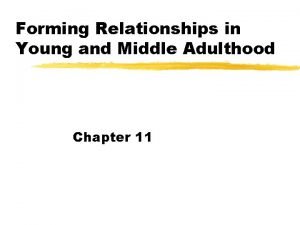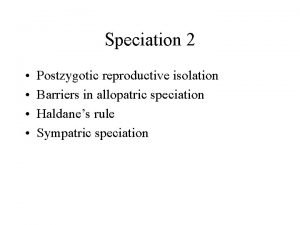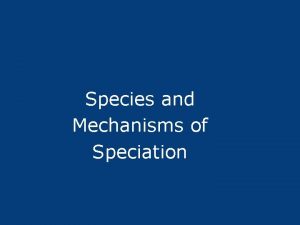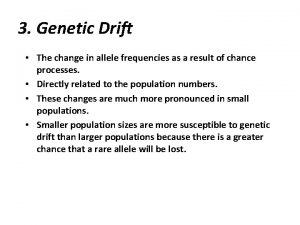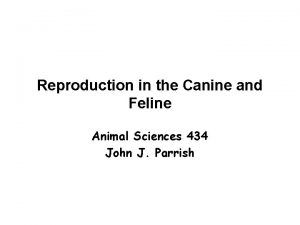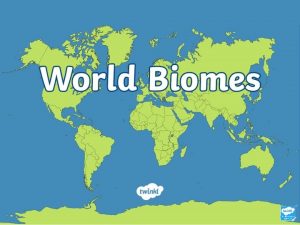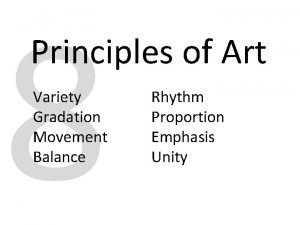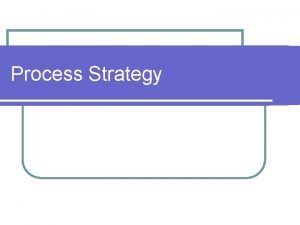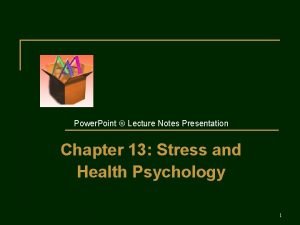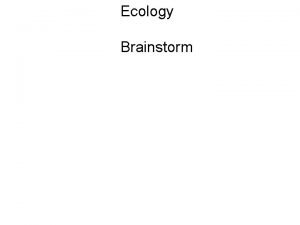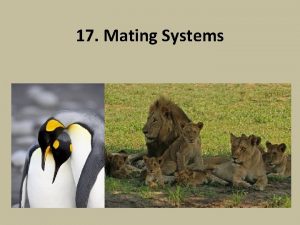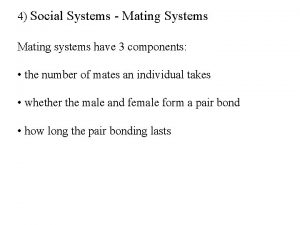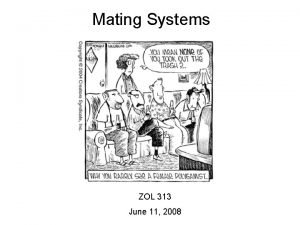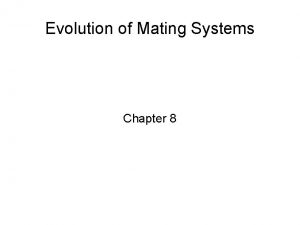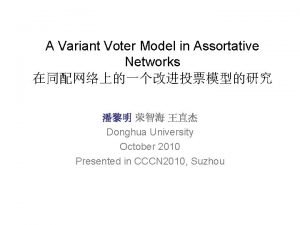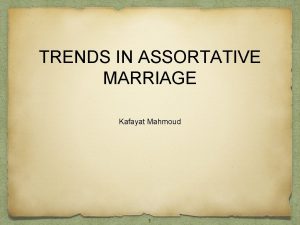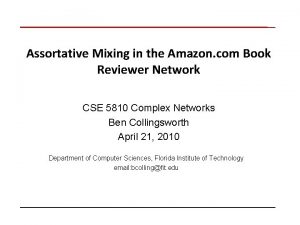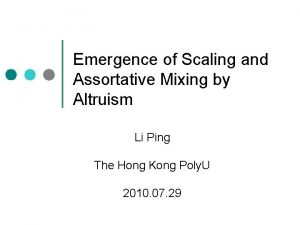Variety of mating systems Panmixia Assortative mating Disassortative













- Slides: 13

Variety of mating systems • Panmixia • Assortative mating • Disassortative mating • Outcrossing • Inbreeding • Mixed mating

Disassortative mating What is the equilibrium frequency of alleles S 1, S 2, S 3, and S 4? What is the fate of a new mutation that produces allele S 5?

Inbreeding What is inbreeding? Forms of inbreeding

Genetic consequences of inbreeding Loss of heterozygosity Do allele frequencies change (i. e. , does inbreeding result in evolution)?

Genetic consequences of inbreeding Heterozygosity: Homozygosity: Genetic variance within lines: Genetic variance among lines: Response to selection among lines: Fitness of inbred lines:

The inbreeding coefficient, Wright’s F Sewall Wright 1889 -1988

The inbreeding coefficient, Wright’s F F ranges from 0 -1 • 0 = completely outbred (H-W) • 1 = completely inbred (homozygous) F can be thought of as: • Proportional loss of heterozygosity • Probability of homozygosity • Half the coefficient of relatedness of the parents F is measured relative to some starting population, which is usually assumed to have F = 0

The inbreeding coefficient, Wright’s F From Hartl and Clark Fig. 4. 15

Genotype frequencies as a function of F AA: p 2 + pq. F Aa: 2 pq - 2 pq. F aa: q 2 + pq. F

How can F be estimated if we don’t have a pedigree for the whole population? HI = observed heterozygosity at neutral loci (usually with molecular markers) HT = heterozygosity expected under H-W (2 pq) Aa: 2 pq - 2 pq. F = HI 2 pq(1 -F) = HI HT(1 -F) = HI F = 1 -(HI/HT) F = (HT-HI)/HT

Inbreeding depression What is inbreeding depression? What causes inbreeding depression? How do organisms avoid inbreeding depression?

Inbreeding Scientists find no biological reason to stop first cousins from marrying • Risks to children born to cousins not as high as previously thought By Denise Grady The New York Times Thursday, April 4, 2002 Sarah Josiah Wedgwood I Wedgwood Robert Darwin Susannah Wedgwood Charles Darwin Josiah Wedgwood II Mrs. JWII Emma Wedgwood

Is inbreeding always bad? By exposing recessive alleles to selection in homozygotes: • Leads to rapid fixation of beneficial recessive alleles • Purges deleterious recessives; aka, lightens the genetic load
 Assortative mating
Assortative mating Assortative mating
Assortative mating Polyploidy
Polyploidy Non random mating
Non random mating Canine mating cont
Canine mating cont Typology of operations
Typology of operations A variety
A variety Maikling kwento gamit ang barayti ng wika
Maikling kwento gamit ang barayti ng wika 8 principle of art
8 principle of art What is standard variety of language
What is standard variety of language Process volume and variety
Process volume and variety Walter cannon observed that a variety of stressors trigger
Walter cannon observed that a variety of stressors trigger Digital library perspectives
Digital library perspectives Kitar nitrogen
Kitar nitrogen
